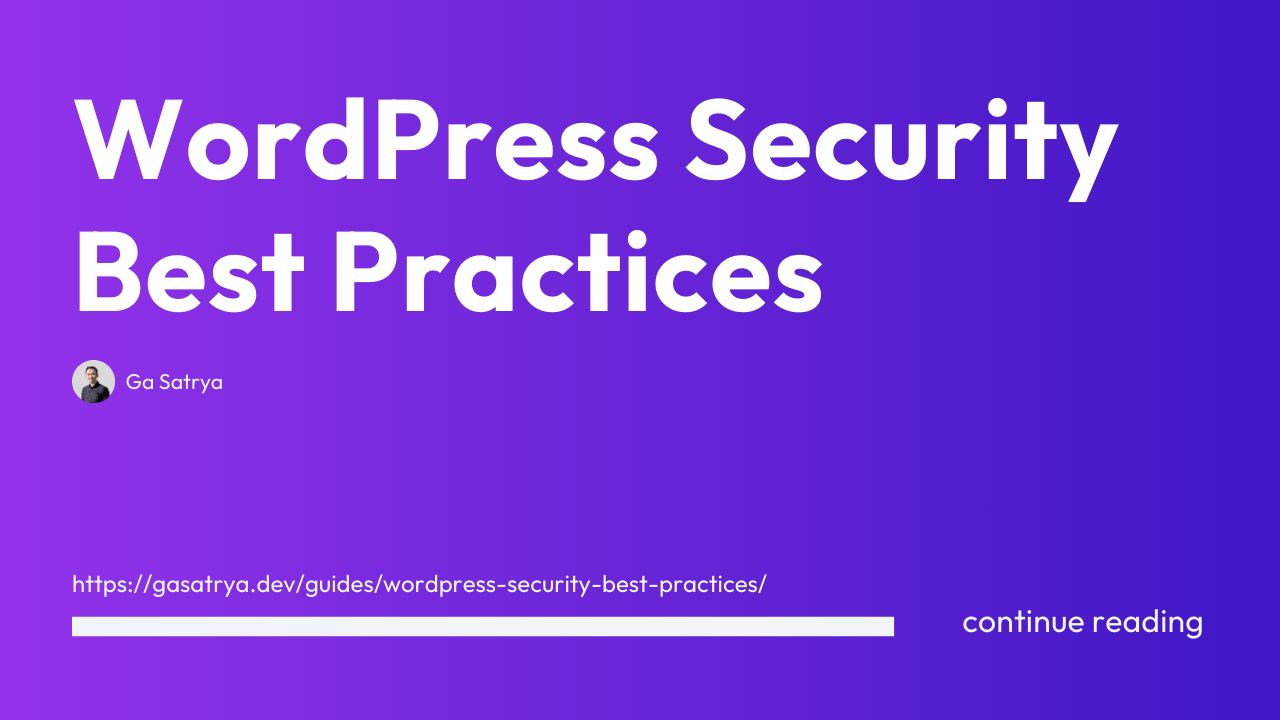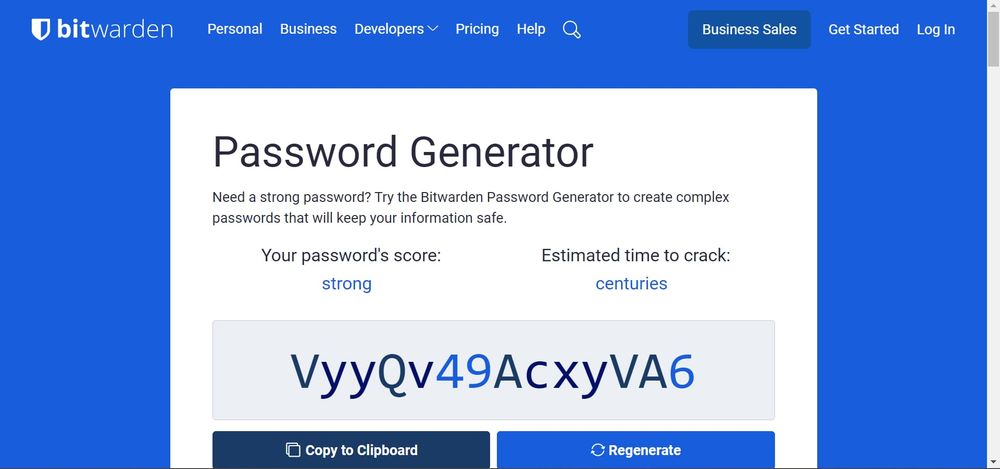12 Essential WordPress Security Best Practices to Bulletproof Your Website
Table of Contents
- 1. Keep WordPress Core, Themes, and Plugins Up to Date
- 2. Use Strong and Unique Passwords
- 3. Implement Two-Factor Authentication (2FA)
- 4. Secure Your WordPress Login Page
- 5. Choose a Secure Hosting Provider
- 6. Implement SSL/TLS Encryption
- 7. Use a Web Application Firewall (WAF)
- 8. Regular Backups
- 9. Manage User Permissions
- 10. Monitor Your Site for Malware and Suspicious Activity
- 11. Educate Your Team on Security Best Practices
- Conclusion
WordPress powers over 40% of all websites on the internet, making it a prime target for hackers and malicious actors. While no website is 100% secure, implementing robust security measures can significantly reduce the risk of your site being compromised.
This comprehensive guide will walk you through 12 essential WordPress security best practices, tips, providing step-by-step instructions, and real-world examples to help you safeguard your website.

1. Keep WordPress Core, Themes, and Plugins Up to Date
Regularly updating your WordPress installation, themes, and plugins is crucial for maintaining security. Updates often include patches for known vulnerabilities and security fixes.
How to update:
- Log in to your WordPress dashboard
- Go to Dashboard > Updates
- Review available updates for WordPress core, themes, and plugins
- Click "Update Now" for each item that needs updating
Best practice: Enable automatic updates for minor WordPress releases and security updates. You can do this by adding the following line to your wp-config.php file:
define( 'WP_AUTO_UPDATE_CORE', 'minor' );Real-world example: In 2017, a severe vulnerability in the WordPress REST API was discovered, potentially allowing attackers to modify content on affected sites. WordPress quickly released version 4.7.2 to address this issue, highlighting the importance of prompt updates [1].
2. Use Strong and Unique Passwords

Weak passwords are one of the most common entry points for hackers. Implementing strong, unique passwords for all user accounts is essential.
How to create strong passwords:
- Use a combination of uppercase and lowercase letters, numbers, and special characters
- Make passwords at least 12 characters long
- Avoid using personal information or common words
Tool recommendation: Use a password manager like LastPass, 1Password, or Bitwarden to generate and store strong, unique passwords for each account.
Best practice: Implement a password policy for all users on your site, requiring strong passwords and regular password changes.
3. Implement Two-Factor Authentication (2FA)
Two-factor authentication adds an extra layer of security by requiring a second form of verification in addition to a password.
How to enable 2FA:
- Install and activate a 2FA plugin like WP 2FA or Two Factor Authentication
- Configure the plugin settings
- Enable 2FA for all admin and editor accounts
Case study: After implementing 2FA, a popular e-commerce site reported a 99.9% reduction in account takeovers.
4. Secure Your WordPress Login Page
The default WordPress login page (/wp-admin or /wp-login.php) is a common target for brute force attacks. Securing this page can significantly reduce your site's vulnerability.
Steps to secure your login page:
- Change the default login URL using a plugin like WPS Hide Login
- Limit login attempts with a plugin such as Limit Login Attempts Reloaded
- Implement CAPTCHA to prevent automated login attempts
Best practice: Use a combination of these methods for maximum security.
5. Choose a Secure Hosting Provider
Your hosting provider plays a crucial role in your website's security. Choose a provider that offers robust security features and regular backups.
What to look for in a secure hosting provider:
- Regular malware scans and removal
- Web Application Firewall (WAF)
- DDoS protection
- Automated backups
- SSL/TLS certificates
Recommended hosts: SiteGround, WP Engine, and Kinsta are known for their strong security measures and WordPress-specific optimizations.
6. Implement SSL/TLS Encryption
SSL/TLS encryption ensures that data transmitted between your website and visitors' browsers is secure.
How to implement SSL:
- Obtain an SSL certificate (many hosts offer free certificates through Let's Encrypt)
- Install the SSL certificate on your server
- Update your WordPress site to use HTTPS
- Install a plugin like Really Simple SSL to handle redirects and mixed content issues
Industry standard: As of 2021, 85% of all websites use HTTPS, making it essential for both security and user trust [2].
7. Use a Web Application Firewall (WAF)
A WAF helps protect your website from various types of attacks by filtering and monitoring HTTP traffic.
How to implement a WAF:
- Choose a WAF solution (e.g., Cloudflare, Sucuri, or a plugin like Wordfence)
- Sign up for the service and follow their setup instructions
- Configure the WAF rules to match your site's needs
Case study: After implementing a WAF, an online retailer reported a 70% reduction in malicious traffic and attempted attacks [3].
8. Regular Backups
Regular backups are crucial for quick recovery in case your site is compromised or experiences data loss.
How to implement a backup strategy:
- Choose a backup plugin like UpdraftPlus or BackupBuddy
- Configure automatic backups (daily or weekly, depending on your site's activity)
- Store backups in multiple locations (e.g., cloud storage, local drive)
- Regularly test your backups to ensure they can be successfully restored
Best practice: Follow the 3-2-1 backup rule: Keep 3 copies of your data, on 2 different types of storage media, with 1 copy stored off-site.
9. Manage User Permissions
Properly managing user roles and permissions can limit the potential damage if an account is compromised.
Steps to manage user permissions:
- Audit existing user accounts and remove any unnecessary ones
- Assign the least privileged role necessary for each user
- Use a plugin like User Role Editor to fine-tune permissions
- Regularly review and update user roles and permissions
Best practice: Create separate accounts for content creators and administrators, using admin accounts only when necessary.
10. Monitor Your Site for Malware and Suspicious Activity
Regular monitoring can help you detect and respond to security threats quickly.
How to monitor your site:
- Install a WordPress security plugin with malware scanning capabilities (e.g., Wordfence, Sucuri Scanner)
- Set up regular automated scans
- Configure email alerts for suspicious activity
- Use Google Search Console to monitor for security issues
Real-world example: A business owner discovered a hidden malware infection through regular scans, allowing them to clean the site before it was blacklisted by search engines.
11. Educate Your Team on Security Best Practices
If you have multiple people working on your WordPress site, ensuring everyone follows security best practices is crucial.
How to educate your team:
- Develop a security policy document
- Conduct regular security training sessions
- Share updates on new threats and best practices
- Implement and enforce security protocols
Case study: After implementing a comprehensive security training program, a digital agency reported a 60% reduction in security incidents caused by human error [4].
Conclusion
Implementing these 12 WordPress security tips will significantly enhance your website's protection against potential threats. Remember that security is an ongoing process, and staying informed about the latest threats and best practices is crucial. Regularly review and update your security measures to ensure your WordPress site remains safe and secure.
WordPress Security Team. (2017). WordPress 4.7.2 Security Release. https://wordpress.org/news/2017/01/wordpress-4-7-2-security-release/ ↩︎
W3Techs. (2021). Usage statistics of HTTPS for websites. https://w3techs.com/technologies/details/ce-httpsdefault ↩︎
Cloudflare. (2020). Cloudflare Q4 2020 DDoS Attack Trends. https://blog.cloudflare.com/ddos-threat-report-2023-q4 ↩︎
SANS Institute. (2019). 2019 SANS Security Awareness Report. https://www.sans.org/security-awareness-training/reports/2019-security-awareness-report ↩︎
Featured Guides
Table of Contents
- 1. Keep WordPress Core, Themes, and Plugins Up to Date
- 2. Use Strong and Unique Passwords
- 3. Implement Two-Factor Authentication (2FA)
- 4. Secure Your WordPress Login Page
- 5. Choose a Secure Hosting Provider
- 6. Implement SSL/TLS Encryption
- 7. Use a Web Application Firewall (WAF)
- 8. Regular Backups
- 9. Manage User Permissions
- 10. Monitor Your Site for Malware and Suspicious Activity
- 11. Educate Your Team on Security Best Practices
- Conclusion